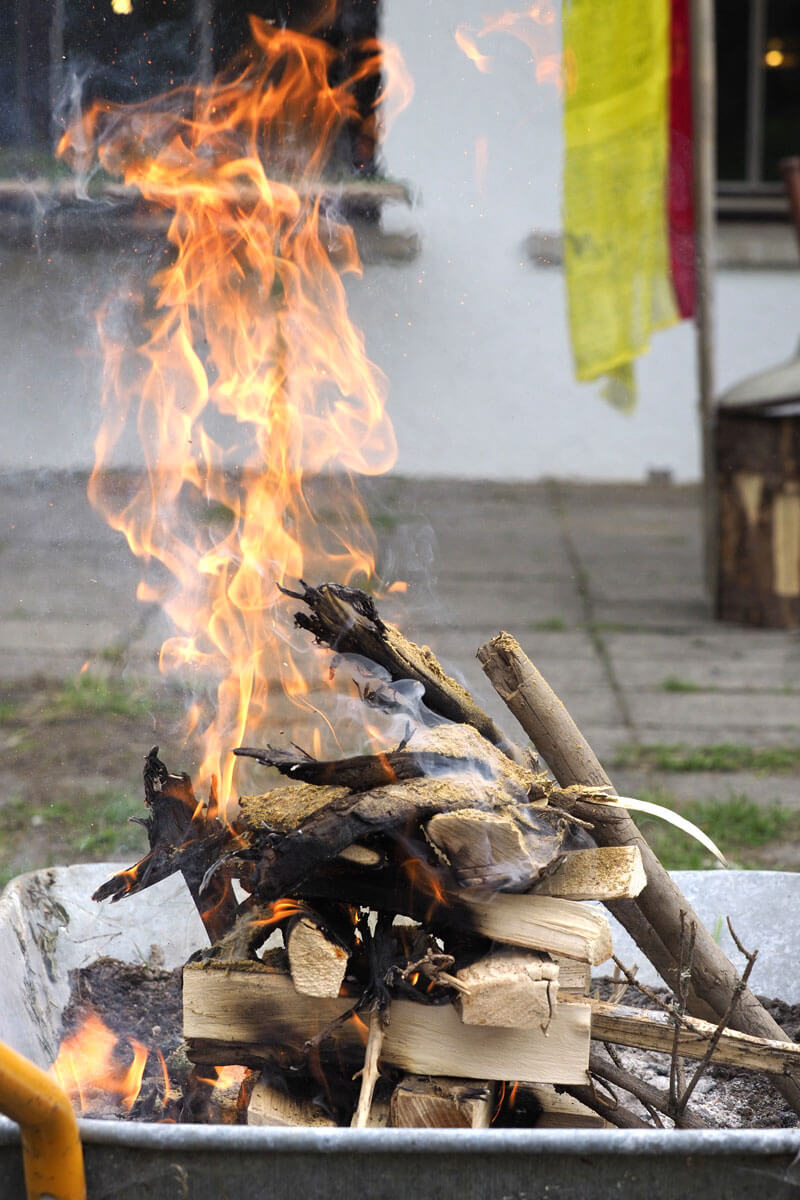On Extinguishing a Dream Fire
In the Q&A session in the afternoon somebody asks: What about the nectar leaving me: does it harm any beings? Rinpoché explains: If in your dream you see a dream fire, it is illogical to take a real fire extinguisher. You need a dream fire-extinguisher, and it is true, we need a dream fire extinguisher.
He explains about the half crocodile, half turtle serpent being that exists only in some explanations on the visualization, because, as Sherab Gyaltsen Rinpoché explained, not everybody has a dream fire to extinguish. If it really is a problem, we can visualize this.
He reminds us about the importance of focusing on the rainbow-like quality in all the stages of the visualization. How lucky we are to have such thorough council for our practice!

Chöpen’s Duties
One of the roles that participants can take for a day at a time is that of the chöpen. To many of us it is not quite clear just how much this entails. We first think of the chöpen as someone who will support a master, offering a mandala in an initiation, some kind of initiation assistant.

But the chöpen’s job indeed entails much more; they’re actually the person in charge of the gompa, of the lights, of keeping it neat, taking down offerings and putting on new ones, making fire for smoke offerings, collecting the materials for those fires and smoke offerings. He’s also the one making the tormas and the person in charge of distributing the tsog. Calling the practitioners to the thün by beating the gong or the drum for Mahakala is another aspect of chöpen’s duties. It’s quite a bit more than what immediately meets the eye and I am pretty sure my list here isn’t complete yet.
Since the chöpen has so many duties, he can have an assistant, a chöyo, or two. It is for him to decide whether he needs one. Since my two chöyos and I will be having a busy day, I will try to relate the experience more fully in a more personal text in the Day 4 entry.
Powered by Raw and Fresh Suffering
In the quiet of the düntsam or with the energy of the practice or by being triggered by the other participants, some people get surprised by the intensity of their emotions or the deep wells of sadness that they can tap into. Rinpoché responds to this in a Q&A session one afternoon.

May they be free from suffering and the root of suffering, he cites the Four Immeasurables. He points out that by the root of suffering we mean confusion about the conditioned nature of our impermanent reality. We do not have memories – he says, of hell realms or hungry ghost realms, but right here in our retreat there is suffering and when it is raw and fresh we can use it to fuel our path, use it to further our wish to reach enlightenment, but not as in an aim away from us but in dealing with ourselves right here and now. Here in this retreat we have the group also to reflect back which ground we stand on.
Our main organizer will later say in praise of our community that there is no one that she hasn’t learned from in the course of these days. I would say there is no one that hasn’t cracked up a little. We’ve seen men crying. But as Leonard Cohen says: There’s a crack, a crack in everything. That’s how the light gets in.

